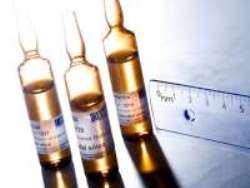The Joint Research Centre (JRC) of the European Commission has released a new report that deeply reviews existing measurement methods and their key challenges in determining the size of nanoparticles in accordance with the regulatory context defining the term ‘nanomaterial.’
 No single measurement method can be used for all materials© EU, 2012
No single measurement method can be used for all materials© EU, 2012
In October 2011, the European Commission implemented Recommendation 2011/696/EU on a standard definition to describe the term ‘nanomaterial’ for facilitating the regulation of products comprising such materials. The objective was to improve innovation and facilitate industry, while ensuring the safety of nanomaterials.
As per the definition, a nanomaterial is a manufactured, incidental and natural material comprising particles, as an agglomerate or as an aggregate in an unbound state, where ³50% of the particles are in the number size distribution with one or more exterior dimensions in the 1-100 nm size range. Proper adoption of this definition needs suitable techniques and tools wherein measurement aspects are critical.
The report highlights that it is not possible to use any single measurement technique for all materials that come under the regulatory definition. Different techniques will be needed based on the material to be probed. The report provides an outline of the capabilities of existing measurement techniques such as centrifugal liquid sedimentation, dynamic light scattering and electron microscopy, to name a few. It also analyzes yet-to-be-solved measurement challenges.
The conclusions emphasize the practical issues in measuring materials that have different properties. None of the existing techniques are able to identify whether all types of potential nanomaterials fulfill regulatory definition or not. Hence, there is a requirement for a suitable combination of measurement techniques. It is essential to thoroughly check the consistency of every measurement techniques utilized in such combinations with the help of dedicated method validation analyses.
The report is the first in-depth review that specifically evaluates the suitability of existing measurement techniques for the implementation of the European Commission's definition.